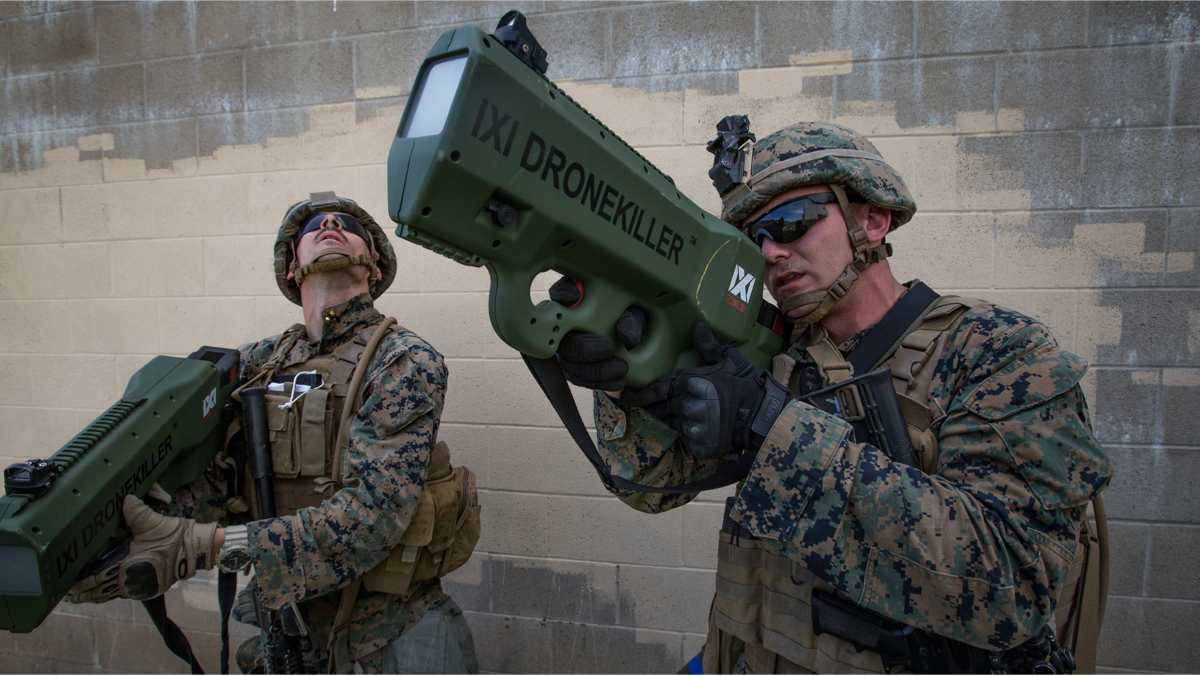[ad_1]

Defense Secretary Lloyd Austin signed off on a classified strategy Monday for countering drone threats in an effort to unify the military’s approach to protecting its facilities and personnel from weaponized unmanned aerial systems.
“Unmanned systems pose both an urgent and enduring threat to U.S. personnel, facilities, and assets overseas,” the Pentagon said in a statement Thursday announcing the strategy. “By producing a singular Strategy for Countering Unmanned Systems, the Secretary and the Department are orienting around a common understanding of the challenge and a shared approach to addressing it.”
One-way aerial drone attacks have spiked in recent years, and the Pentagon has grown increasingly concerned by the threats they pose to the U.S. and its allies. For more than a year, Iran-backed Houthi rebel groups have been using small unmanned aerial systems, or UAS, to target ships in the Red Sea, and killer drones have featured heavily in Russia’s war in Ukraine.
DOD officials have said the department is taking a layered approach to defending against enemy drones, meaning the U.S. will pursue a range of capabilities to disable these systems, from electronic warfare to kinetic weapons. The military services have a number of ongoing programs to develop and field this technology.
Austin’s strategy is aligned with these and other high-level DOD efforts, including those led by the Joint Counter-Small UAS office, which was established in 2019 to coordinate counter-UAS development, tactics and training across the military services.
The strategy also closely follows the second phase of Replicator, which is focused on rapidly fielding off-the-shelf counter-drone technology. Austin, who announced Replicator 2 in September, said the Pentagon plans to request funding in fiscal 2026 and set a two-year timeline for delivering “meaningfully improved” counter-UAS systems.
An unclassified fact sheet released Thursday sheds some light on the department’s strategy, laying out five lines of effort it plans to pursue. These include: improving its ability to detect, track and characterize counter-drone threats; launching focused campaigns to counter “threat networks”; making counter-drone defense a core piece of its doctrine, training and policy; quickly fielding counter-UAS technology and prioritizing funding for these capabilities; and placing a greater emphasis on countering unmanned systems in its force development and design efforts.
The strategy emphasizes the need for partnerships with Congress, defense and commercial industries and allies. It also pledges to create clear metrics to track its progress, though it’s unclear if those details will be publicly released.
“This strategy marks a critical next step in the Department of Defense’s efforts to counter unmanned systems, but much work lies ahead,” the fact sheet states. “Although the rapidly evolving nature of the threats posed by adversary use of unmanned systems means that the department will need to continually reassess our efforts, this strategy sets a foundation for action to meet this challenge.”
Courtney Albon is C4ISRNET’s space and emerging technology reporter. She has covered the U.S. military since 2012, with a focus on the Air Force and Space Force. She has reported on some of the Defense Department’s most significant acquisition, budget and policy challenges.
Noah Robertson is the Pentagon reporter at Defense News. He previously covered national security for the Christian Science Monitor. He holds a bachelor’s degree in English and government from the College of William & Mary in his hometown of Williamsburg, Virginia.
[ad_2]
Source link


